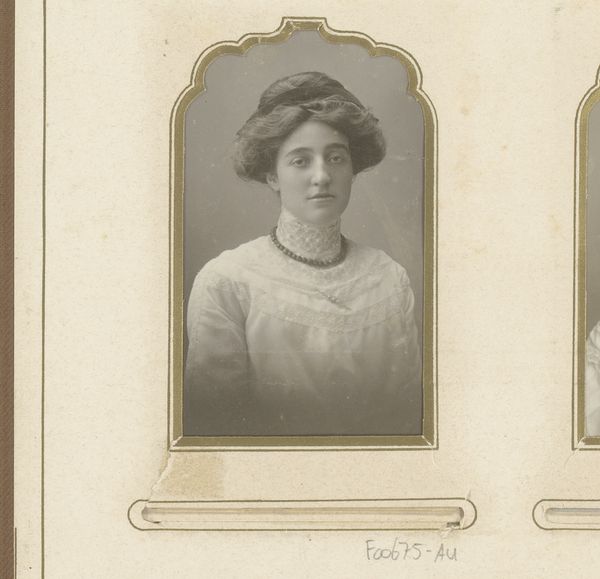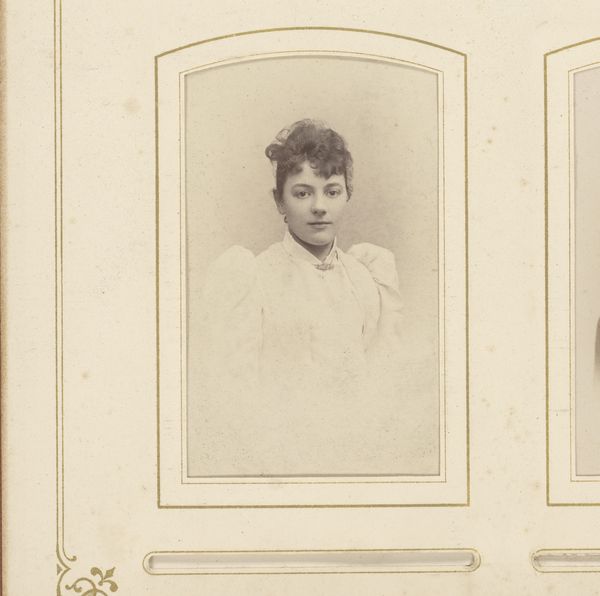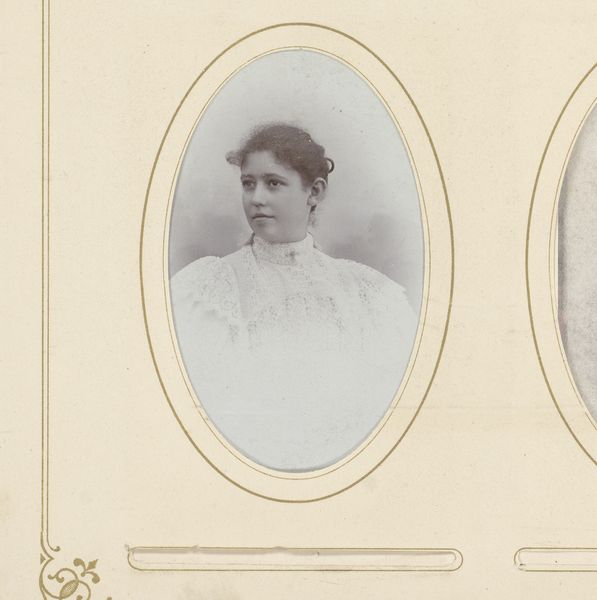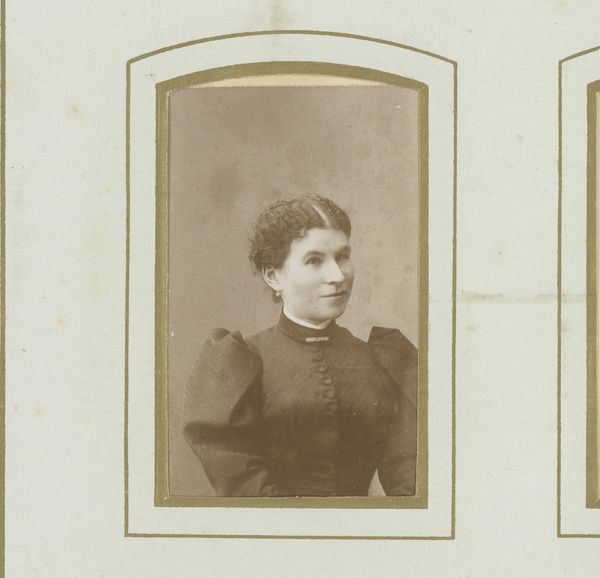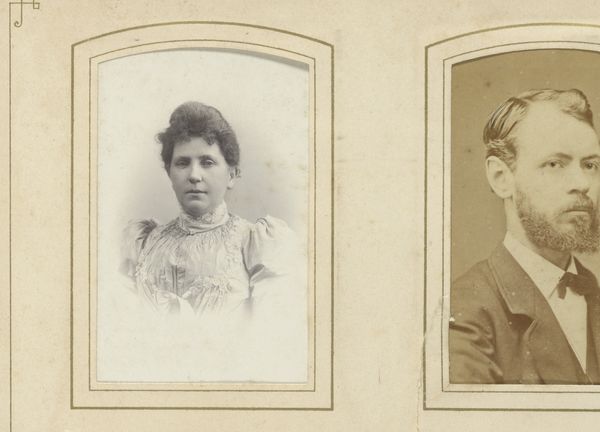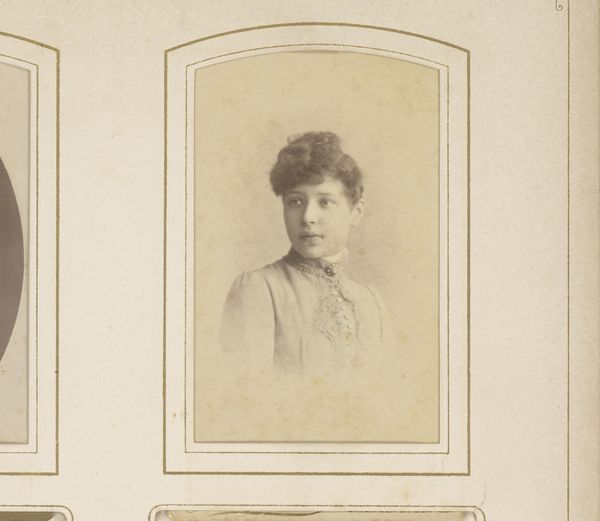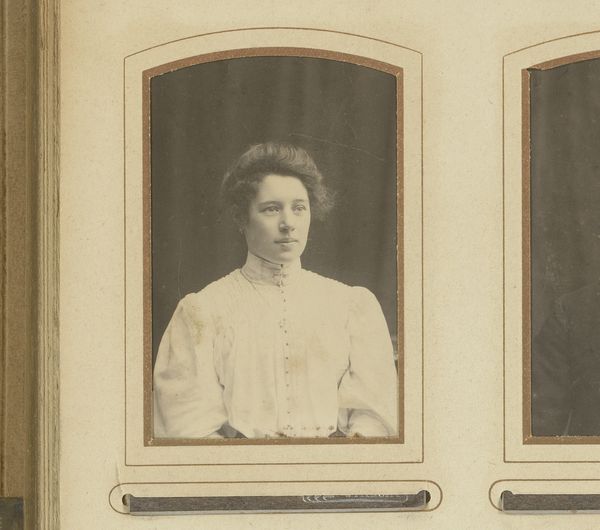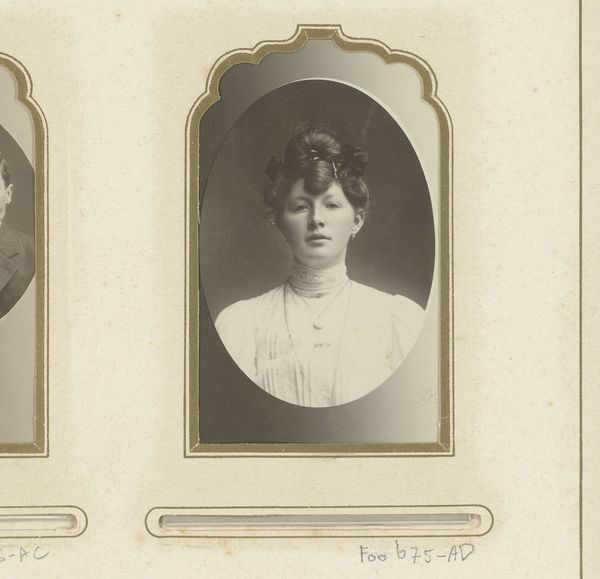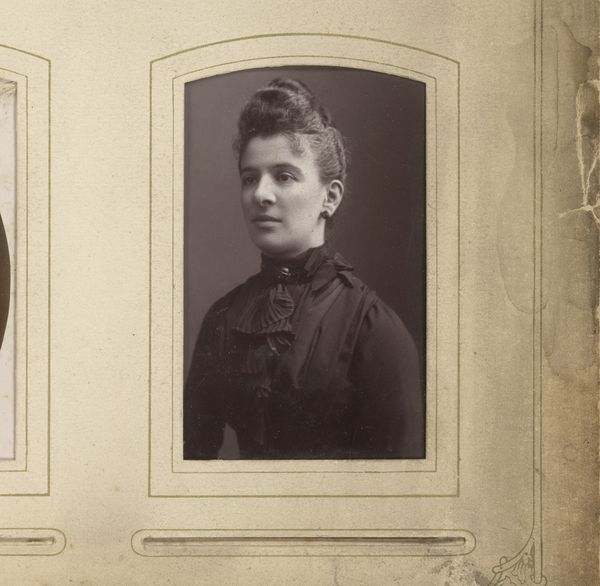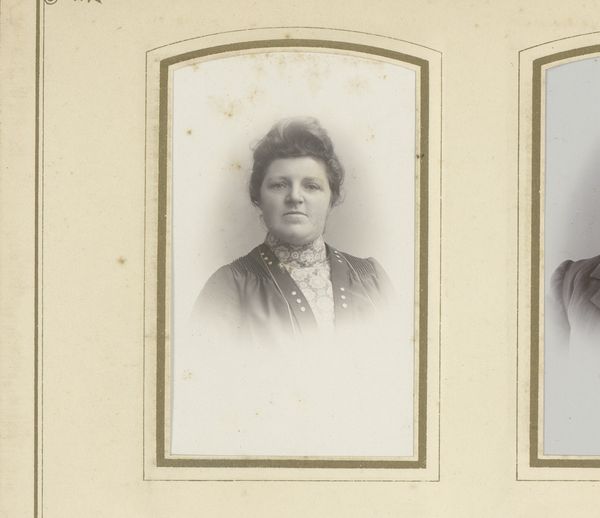
photography
#
portrait
#
pictorialism
#
photography
#
historical photography
#
19th century
Dimensions: height 85 mm, width 51 mm
Copyright: Rijks Museum: Open Domain
Editor: Here we have a portrait titled "Portret van een jonge vrouw," which translates to "Portrait of a Young Woman" by H.C. de Graaff, dated sometime between 1882 and 1922. It’s a photograph, and it feels very…staged. What strikes you most about this image? Curator: I see a young woman positioned within a very specific historical context. The "Pictorialism" style tag points to the late 19th and early 20th centuries, a period marked by significant social shifts concerning women's roles. What narratives do you think the subject is performing, and what do you see in the very deliberate styling of the clothing? Editor: Well, her high-necked lace dress suggests a certain modesty, and the carefully arranged hair implies a concern with appearances. I guess she is performing a kind of idealized femininity expected of women at that time? Curator: Exactly. And it is this tension, this construction of identity, that is so fascinating. De Graaff is using the relatively new medium of photography, often considered objective, to construct a carefully curated image of womanhood. It reflects and reinforces societal expectations. Consider how class and race might also intersect with these gendered expectations. How accessible would such a portrait have been for women from different socioeconomic backgrounds? Editor: That makes me think about who had the privilege to even participate in these visual representations. It probably wasn't representative of most women. Curator: Precisely. This portrait isn't just an image of an individual, it's a social document, revealing power structures and ideals of the time. This photograph operates as a visual signifier of its historical moment and provides insight into the prevailing norms regarding identity and representation. Editor: That's a powerful perspective! I’ll definitely remember to think more critically about who is included, and who is excluded, in these kinds of images. Curator: And how those choices shape our understanding of the past.
Comments
No comments
Be the first to comment and join the conversation on the ultimate creative platform.
